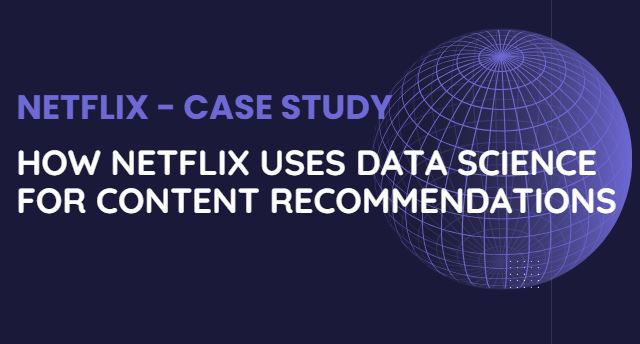
Introduction to Building a Data Science Portfolio
Building a strong data science portfolio is crucial for showcasing your skills, experience, and projects to potential employers. Here’s a step-by-step guide on how to create an impressive portfolio that can help you land your dream job:
1. Start with the Basics: Personal Information and Resume
- Include Your Resume: Your resume should summarize your education, experience, skills, and certifications. Make sure it’s up-to-date and highlights your key accomplishments.
- Add a Personal Statement: A brief introduction or personal statement can give potential employers insight into your career goals and passions.
2. Showcase Relevant Projects
- Choose a Variety of Projects: Include projects that demonstrate your proficiency in different aspects of data science, such as data cleaning, exploratory data analysis, machine learning, and data visualization.
- Provide Detailed Explanations: For each project, include a detailed description of the problem, the approach you took, the tools and technologies you used, and the results you achieved. This shows your problem-solving process.
- Use Real-World Data: Whenever possible, use real-world data to solve practical problems. This demonstrates your ability to work with real data and provides context to your work.
3. Highlight Technical Skills
- Programming Languages: Showcase your proficiency in programming languages like Python, R, or SQL.
- Tools and Libraries: Include tools and libraries such as Pandas, NumPy, TensorFlow, or Tableau that you used in your projects.
- Machine Learning Algorithms: Demonstrate your understanding of different machine learning algorithms by including projects that used techniques like regression, classification, clustering, and deep learning.
4. Create Data Visualizations
- Interactive Dashboards: Create interactive dashboards using tools like Tableau or Power BI to showcase your ability to present data in a user-friendly manner.
- Graphs and Charts: Use libraries like Matplotlib, Seaborn, or Plotly to create graphs and charts that tell a compelling story with data.
5. Write Blog Posts or Tutorials
- Share Your Knowledge: Writing blog posts or tutorials about your projects, data science concepts, or industry trends can demonstrate your expertise and communication skills.
- Engage with the Community: Share your posts on platforms like LinkedIn, Medium, or GitHub to engage with the data science community and get feedback.
6. Leverage GitHub for Code Hosting
- Create a GitHub Repository: Host your project code on GitHub, ensuring that it is well-organized and documented. This allows potential employers to review your code and see how you approach problem-solving.
- Include a ReadMe File: Each project repository should have a ReadMe file that provides an overview of the project, the datasets used, the tools and technologies employed, and instructions for running the code.
7. Showcase Collaboration and Teamwork
- Collaborative Projects: Include projects where you worked with others, as this demonstrates your ability to collaborate in a team environment.
- Contribution to Open Source: If you’ve contributed to open-source projects, include this in your portfolio to show your commitment to the data science community.
8. Keep Your Portfolio Updated
- Regular Updates: As you complete new projects or learn new skills, update your portfolio to reflect your latest work and abilities.
- Remove Outdated Content: Periodically review your portfolio to remove any outdated or less impressive work that doesn’t reflect your current capabilities.
How MITSDE Helps You Build a Strong Data Science Portfolio and Secure the Best Job Opportunities
MIT School of Distance Education (MITSDE) offers a comprehensive data science course designed to equip students with the skills needed to excel in the field. Here’s how MITSDE helps you build a strong portfolio and land your dream job:
1. Industry-Relevant Curriculum
- Practical Knowledge: MITSDE’s data science course is designed to provide you with the practical knowledge and technical skills that are in high demand in the industry.
- Hands-On Projects: The course includes hands-on projects that allow you to apply what you’ve learned in real-world scenarios. These projects can be showcased in your portfolio to demonstrate your capabilities.
2. Expert Faculty and Mentorship
- Guidance from Industry Experts: MITSDE’s faculty comprises industry professionals with extensive experience in data science. They provide valuable insights and guidance on how to tackle complex data problems and build a strong portfolio.
- Personalized Mentorship: MITSDE offers personalized mentorship to help you identify your strengths, choose the right projects, and refine your portfolio to align with industry standards.
3. Access to Cutting-Edge Tools and Technologies
- Learning the Latest Tools: MITSDE ensures that you are proficient in the latest data science tools and technologies, such as Python, R, Tableau, and machine learning libraries. This knowledge is crucial for building a competitive portfolio.
- Hands-On Experience: The course provides ample opportunities to work with these tools, giving you hands-on experience that you can showcase in your projects.
4. Networking and Career Support
- Alumni Network: MITSDE’s vast alumni network provides opportunities for networking, which can lead to job referrals and insights into the job market.
- Career Counseling: MITSDE offers career counseling services to help you prepare for job interviews, refine your resume and portfolio, and connect with potential employers.
- Placement Assistance: MITSDE’s dedicated placement cell works to connect students with top companies in the industry, helping you secure interviews and job offers.
5. Building a Strong Online Presence
- Portfolio Development: MITSDE encourages students to create and maintain an online portfolio showcasing their projects and skills. This portfolio is an essential tool for attracting the attention of recruiters and hiring managers.
- Social Media Engagement: MITSDE also guides how to effectively use platforms like LinkedIn and GitHub to build a professional online presence and network with industry professionals.
Conclusion: Take the Next Step Toward Your Dream Job
Building a data science portfolio is an essential step toward landing your dream job in this competitive field. With the right projects, skills, and presentation, you can showcase your expertise and stand out to potential employers. MITSDE’s data science course provides the education, tools, and support needed to build a strong portfolio and achieve your career goals. Whether you’re just starting or looking to advance in your career, MITSDE is here to help you every step of the way.


